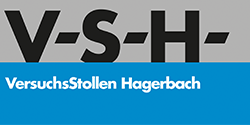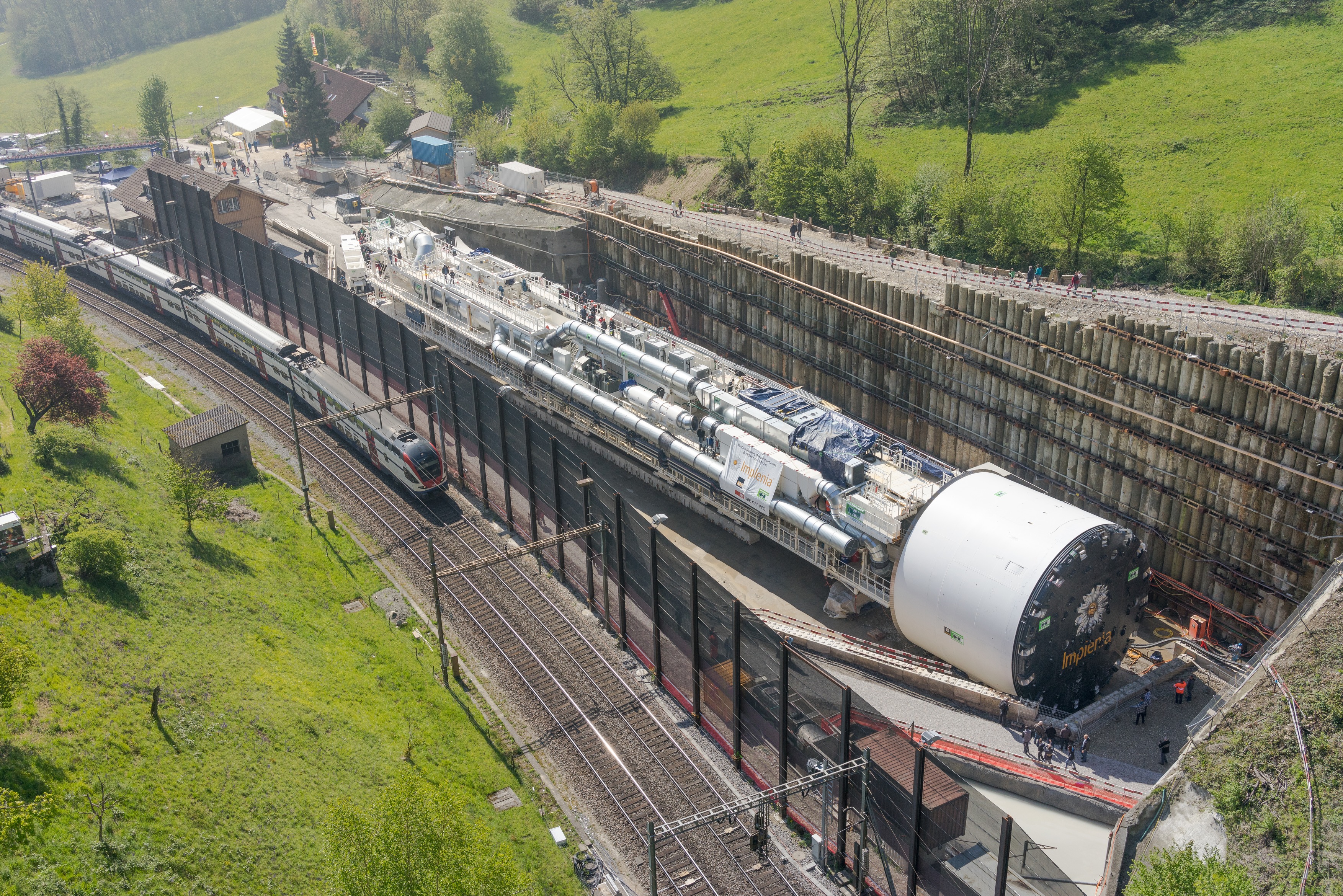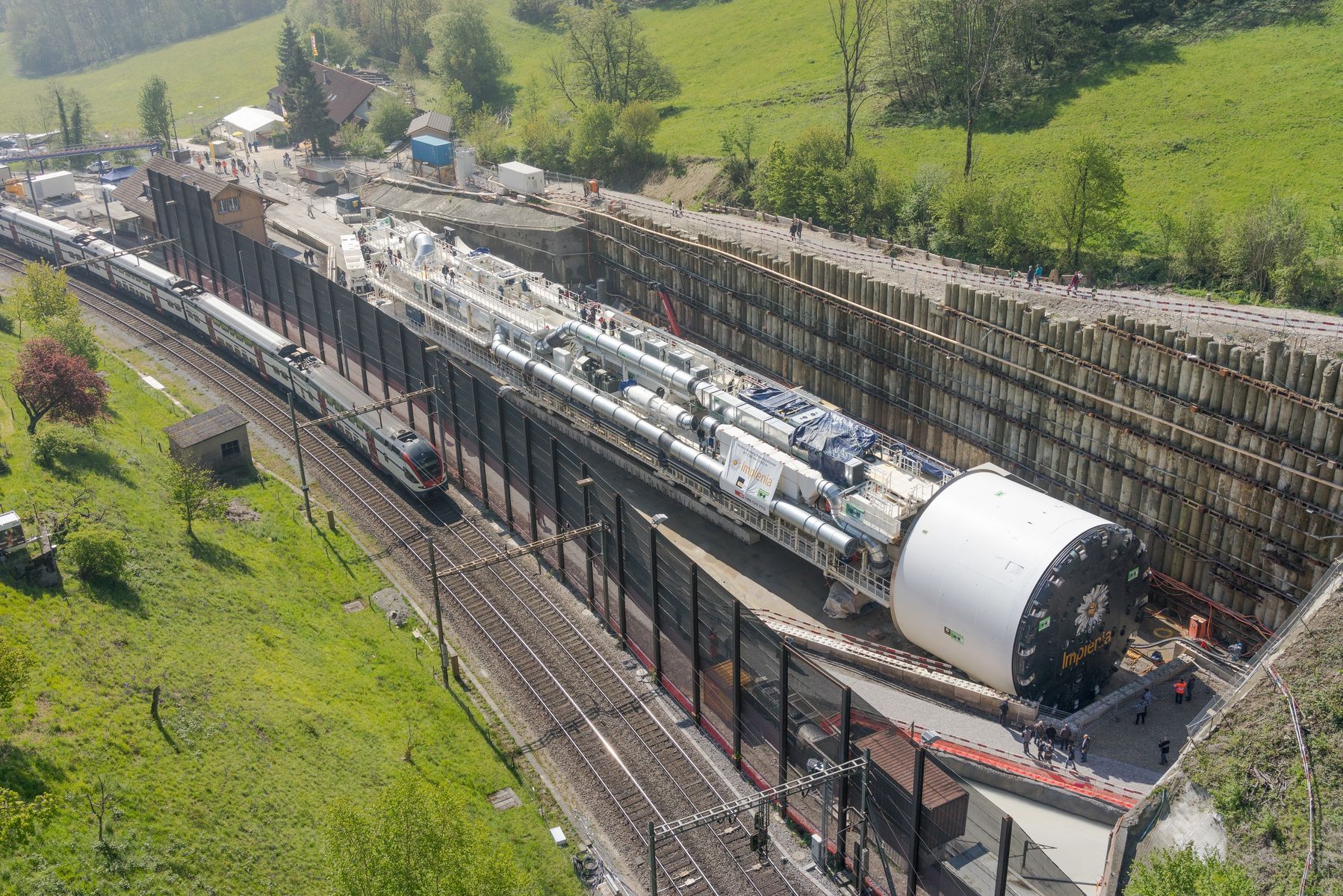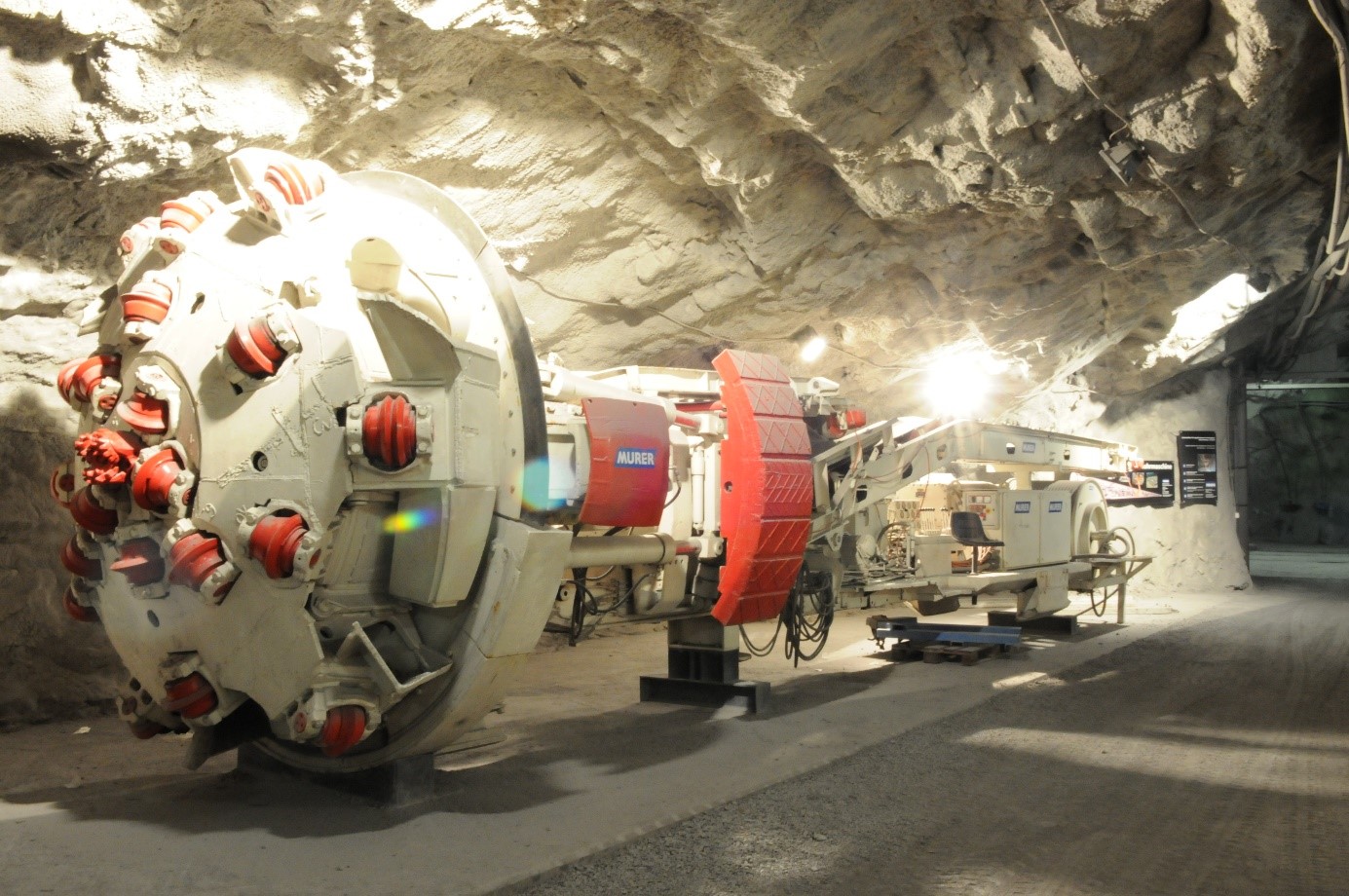After our contribution to research and development about "blasting", the alternative follows now: mechanised tunnelling methods such as full-face machines and roadheaders.
Tunnel boring machine at the Bözberg tunnel, Switzerland, a project in which Amberg Engineering is significantly involved
TBM: A tunnel boring machine is particularly suitable for hard rock. Such large machines are also used for tunnelling in loose rock, which is unsuitable for driving using blasting techniques. Tunnel boring machines, together with shield machines (SM), belong to the category of tunnel boring machines (TBM). The most important part of a TBM is the boring head; it has a diameter of up to 20 metres and consists of a chisel carrier with rotating roller bits which transports excavated rock backwards. The equipment in the rear part of the drill head has a length of up to 200 metres with auxiliary equipment for large diameters. Tunnel boring machines are full-face cutting machines, which means that, unlike road headers, they excavate the entire tunnel cross-section in one step.
Source: en.wikipedia.org
TSM: Roadheaders belong to the category of peripheral milling machines due to their design. Since today's road headers work with cutting heads, these machines are also called cutting head machines. Roadheaders can be used to create roadway cross-sections of any shape. To work the tunnel face, the roadheader is moved towards the face with the crawler tracks and the cutting head is set in motion. The face of the tunnel or roadway is then milled off in sections with the cutting head.
Source: en.wikipedia.org
In this area, too, the Hagerbach Test Gallery offers the ideal conditions: Since its beginnings in the 1970s, the focus has been on the development of machine technology that is more robust, faster or more digitalised to meet the tasks of tunnelling. Advantages compared to the use of explosives are the continuous processes, lower emissions in terms of vibration and gas release, as well as the reduced stress on the rock.
The machine technology comes in various shapes and sizes. The aim of the development will always remain the same: To attack and destroy the rock faster and more efficiently, but at the same time to work economically and safely. Especially for the latter task, the VSH offers various training opportunities for machinists of the respective equipment.
In addition to the usual areas of application in infrastructure construction for mining and tunnelling, the equipment is also used in the construction of hydroelectric power stations, urban supply and disposal structures and, most recently, in shaft construction. Below you can see our exhibition copy of a relatively small TBM, on which we demonstrate to our visitors the working principle of such equipment.
Take a look at our TBM live at the VSH; we look forward to your visit.
Interesting facts and figures:
The fourth tube of the Hamburg Elbe Tunnel was built between 1997 and 2000 with the 2000 tons heavy TRUDE shield tunnel boring machine with an outer diameter of 14.20 m. The world's largest tunnel boring machine at the time, with 111 scraper blades for soft rock and 31 roller bits for hard rock, extended the tunnel by an average of 6 m/day.
In Switzerland, smaller sections were initially produced in the 1960s using tunnel boring machines. From 1970 onwards, large tunnels for road and rail traffic were also driven with tunnel boring machines. By the end of the 1990s, 19 large road or double-track railway tunnels with a total length of 83 km had been driven with TBMs. The Gotthard base tunnel was built between 2002 and 2010 with the 400 m long and 2700 t heavy gripper tunnel boring machines Heidi (S 211) and Sissi (S 210) from Herrenknecht AG. The drill heads of the machines had a diameter of around 9.5 m and were equipped with more than 60 roller bits. They were driven by ten motors with 350 kW each.
The largest tunnel boring machine in the world dug a highway tunnel in Seattle. It was almost 18 metres high, weighed 70 tonnes and was around 100 metres long. The Americans gave the drill a nickname reminiscent of earlier war jargon: "Fat Bertha". The machine had a diameter of 17.5 metres and even had its own Twitter account. Bertha's mission is now finished. Parts of the machine are to be recycled; another part will be shipped back to the designer in Japan. Impressive photos and fascinating images of the TBM are available on the Flickr account of the Washington State Department of Transportation: www.flickr.com.






